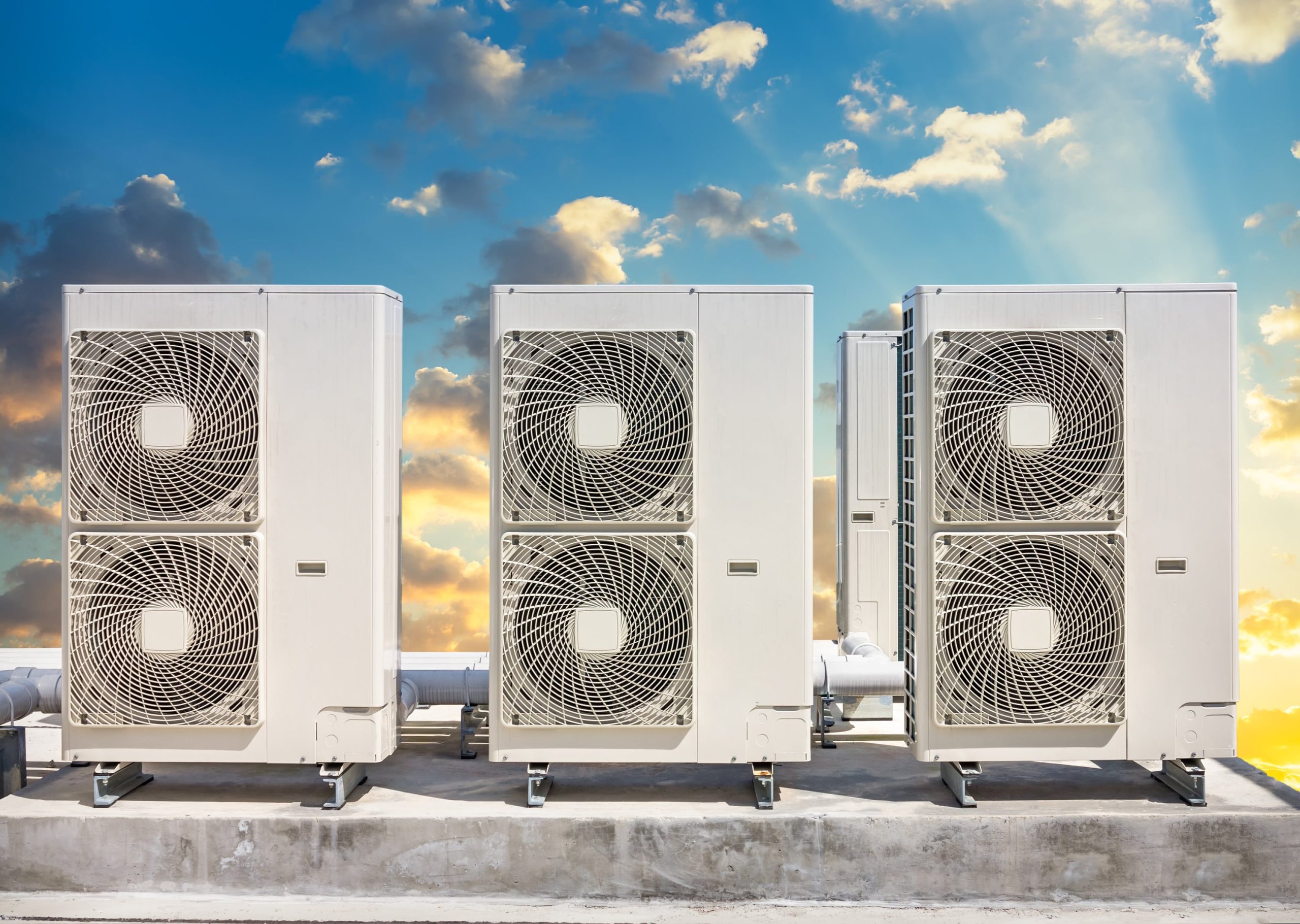5 Reasons Why Your HVAC Unit is Loud Do you find your HVAC unit excessively…

What Are VRV and VRF Technology?
One of our goals here at Conditioned Air Solutions is to educate and inform our customers so that they can make the best decisions about HVAC systems for their home or business. These days, we’re hearing a lot about VRV and VRF technology in HVAC. Let’s take a look at how this technology works and the advantages it could have for you.
See Also: Technology Focused on Improving Service Quality
VRV vs. VRF: What’s the Difference?
First of all, let’s clarify what these letters stand for. VRV is short for Variable Refrigerant Volume. VRF stands for Variable Refrigerant Flow. The fact is, these are two different names for the same basic technology.
Why are there two names for the same thing? Back in 1982, Daikin Industries invented the first Variable Refrigerant Volume system and trademarked the term VRV. When other companies came along later and developed systems using similar technology, they had to call it something else. That’s where the term Variable Refrigerant Flow came from.
So if you see a system referred to as VRV, then it’s a Daikin system. On the other hand, if it’s called VRF, then it’s made by somebody else. VRF is the term used by most companies. It’s become the more common way of referring to this technology, but VRV is actually the original name.
Since we’re proud to be a Daikin Comfort Pro dealer, we’ll be using the term VRV for the rest of this article.
See Also: A Century of Daikin Innovation
How Does VRV Technology Work?
A VRV system is a multi-split type of system. It has a single outside unit, which may contain one or multiple compressors. This is connected to several inside units (air handlers) by refrigerant piping. There’s also communication wiring linking the outside unit to each inside unit.
Refrigerant circulates from the outside unit to the inside units, generally with several inside units on each refrigerant “loop.” It allows for many inside units to be connected to one outside unit. For instance, Daikin’s commercial VRV systems allow a maximum of 64 inside units to be connected to a single outside unit.
VRV system contain compressors that are equipped with inverter technology. This allows the compressors to precisely adjust to the exact speed needed for heating or cooling, based on both the outdoor and indoor conditions as well as how many indoor units are operating at any given time.
But what really sets VRV technology apart from other ductless multi-split systems is the precise control over refrigerant flow. In a VRV system, special electronic expansion valves control the flow of refrigerant to each individual inside unit. Thanks to those valves, each inside unit receives exactly as much refrigerant as it needs to heat or cool the room that it’s in.
See Also: Daikin Ductless Split Systems
Three Types of VRV Systems
There are three different types of VRV systems: cooling-only, heat pump, and heat recovery. Cooling-only systems provide only cooling and dehumidification. Heat pump systems are the most popular type. They provide both heating and cooling. However, a heat pump system will only provide one or the other to all inside units at a given time.
Heat recovery systems are a newer, more complicated technology. With these systems, some indoor units in a system can be heating while others connected to the same outside unit are simultaneously cooling. This is accomplished by actually transferring heat from the rooms being cooled to the rooms being heated. Depending on the system, this may require extra refrigerant lines.
See Also: Refrigerants of the Past, Present, and Future
The Pros and Cons of VRV Systems
VRV systems have a lot of advantages. First and foremost, they allow for precise zone control. With a VRV system, you don’t have to waste money and energy heating or cooling rooms that aren’t being used.
Plus, the system keeps each individual room at its own setpoint. This allows occupants to control the temperature of their own space without affecting the comfort of others. That can be particularly helpful in buildings where you have big variations in temperatures or number of occupants in a room.
In addition to zone control, VRV systems offer highly efficient operation. Thanks to inverter technology, the compressors can run at very low speeds for partial loads. This saves energy. This is using a minimum amount of refrigerant needed for the current conditions. It is an enhanced efficiency by the variable refrigerant volume.
These technological innovations allow VRV systems to be up to 50% more efficient than other equivalent HVAC systems. Substantial savings add up with such a long-term investment.
VRV systems also have the advantage of being modular and easy to expand as the building’s needs change. Plus, they take up less space than the ductwork or water pipes used with other traditional HVAC systems and allow for flexible layout.
On the con side, VRV systems are more expensive to install than some other types of HVAC systems. And they’re not designed for heating or cooling extremely large indoor spaces, since indoor units generally max out at 3-5 tons of capacity. While that may limit the use of VRV in industrial and manufacturing settings, it’s sufficient for most commercial and residential use.
See Also: Know What Size HVAC and What Degree of Technology is Best For Your Home and Lifestyle
Conclusion
Since Daikin invented VRV technology in 1982, VRV has continued to develop and improve. Today, customers can get high efficiency and precise comfort control with VRV technology. Commercial buildings all over the world rely on VRV technology. Poised to become the wave of the future for residential HVAC, VRV is here to stay.


